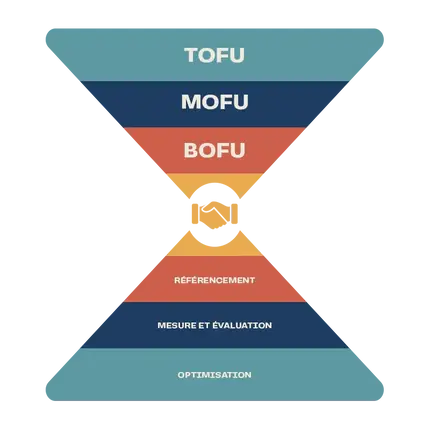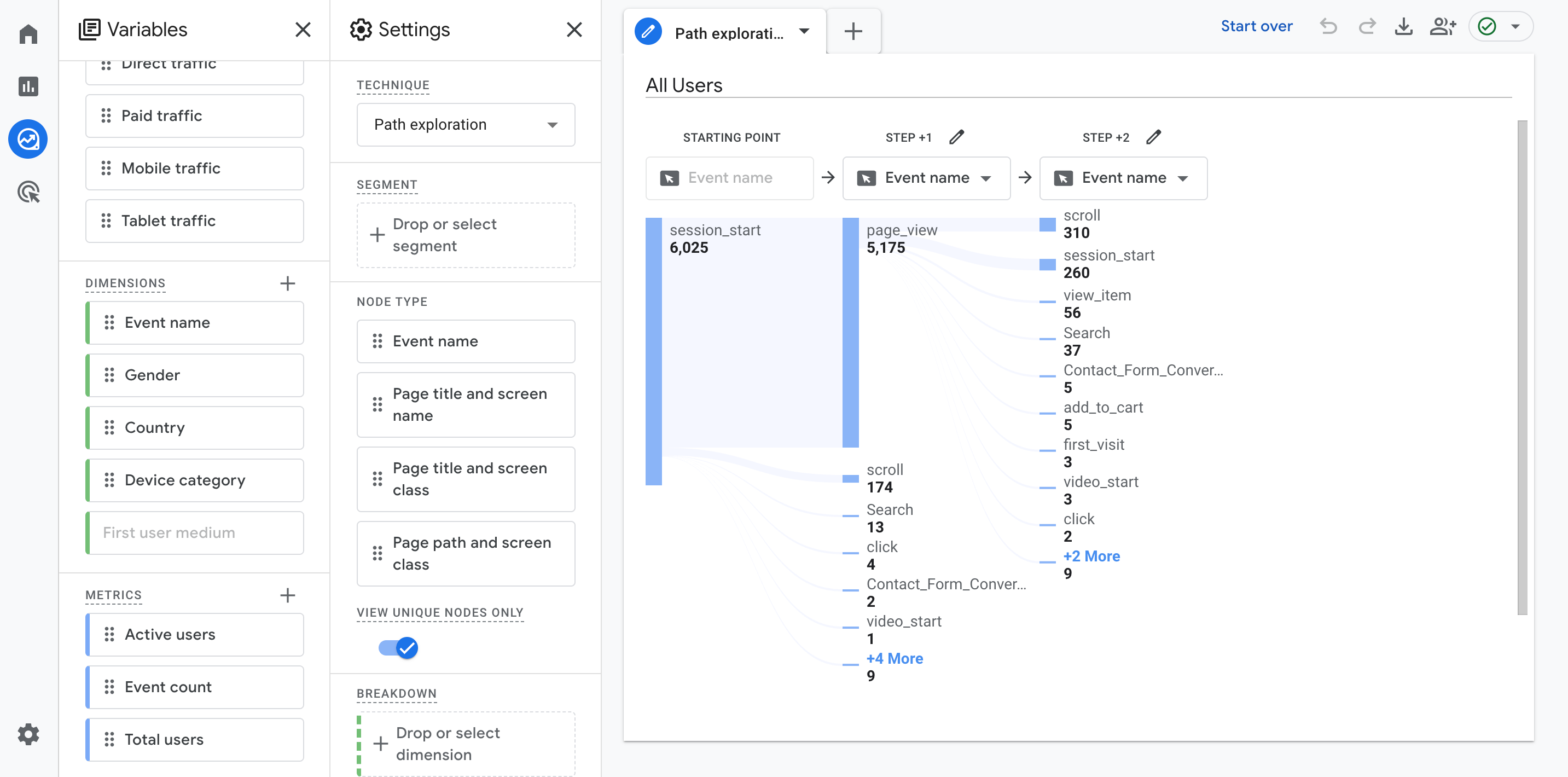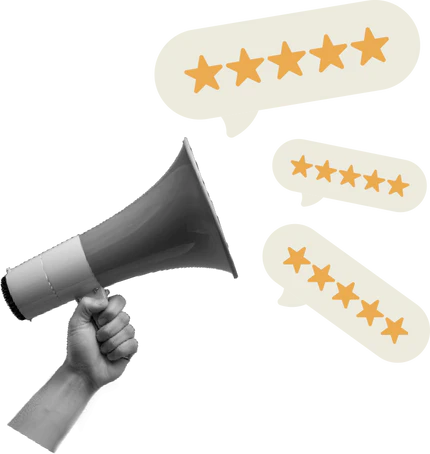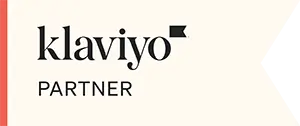
Convert more without increasing your advertising budget
Driving traffic to your website is an important step, but what really makes the difference is converting those visitors into customers . Conversion rate optimization (CRO) can improve the user experience, remove barriers to purchase, and maximize the effectiveness of each interaction—without increasing your advertising budget.
At Bofu , we analyze your conversion funnel, identify friction points, and implement tests and improvements to increase your conversion rate and maximize the value of each visitor . Our approach is based on data, experimentation, and omnichannel integration to optimize the performance of your site and marketing campaigns.
Do you want to improve your conversions and make your traffic profitable?
Why is conversion rate optimization essential?
Improving your conversion rate allows you to make the most of your existing traffic and increase your profitability by:
Conversion rate optimization isn't limited to a website: it's part of an omnichannel approach , connecting paid advertising, marketing automation, CRM, and data analytics for a holistic impact on your bottom line.
Would you like an audit of your CRO?

Key KPIs to monitor in CRO
Conversion rate optimization goes beyond simple click-through and transaction rates. We analyze key performance indicators (KPIs) to measure the overall impact of optimizations:
- Conversion rate by channel (SEO, advertising, email, social networks).
- Shopping cart abandonment rate and transaction completion rate.
- Average basket size and value of e-commerce transactions .
- Form submission rates and lead qualification rates in B2B.
- Customer lifetime value (CLV) : frequency of purchases, recurrence of sales.
- Impact of CRO on the return on investment (ROI) of marketing campaigns.
Through precise monitoring and continuous analysis , we identify opportunities for improvement and adjust strategies based on the results obtained.
Do you want to track and optimize your performance?
Conversion Rate Optimization (CRO)
Frequently Asked Questions
Conversion rate optimization (CRO) aims to increase the percentage of visitors who complete a desired action on a website, such as a purchase, registration, or form submission. By analyzing data and testing improvements, we identify the levers that maximize the impact of your existing traffic.
CRO allows you to fully leverage your audience without increasing your ad spend. By improving the user experience and optimizing conversion points, you increase revenue and reduce acquisition costs.
Conversion rate is calculated by dividing the number of actions taken (purchases, registrations, quote requests) by the total number of visitors, then multiplying by 100. A good CRO is not limited to this figure; it also takes into account KPIs such as cart abandonment rate, time spent on the site or average order value.
Optimization is based on several levers:
- Behavioral analysis via heatmaps and session recordings.
- A/B and multivariate testing to compare different versions of a page.
- UX/UI improvements to streamline navigation and simplify the user experience.
- Optimizing copywriting and calls to action (CTAs) to increase engagement.
- Personalization and segmentation to send the right message to the right audience.
SEO (Search Engine Optimization) focuses on increasing traffic through search engines, while CRO (Conversion Rate Optimization) aims to improve the effectiveness of that traffic by maximizing conversions. Ideally, these two strategies should be integrated to attract qualified visitors and optimize their journey.
Results vary depending on traffic volume and optimizations implemented. Typically, an A/B test should be active for at least two weeks to obtain reliable data. In the long term, a continuous optimization approach can achieve sustainable improvements in conversion rates and revenue.
Conversion rate optimization (CRO) relies on a thorough analysis of a website's performance. To assess the impact of optimizations, several key performance indicators (KPIs) must be continuously monitored.
1. KPIs related to main conversions
These indicators directly measure the success of marketing and sales actions.
- Overall conversion rate : Percentage of visitors completing a desired action (purchase, registration, download, quote request).
- Conversion rate by channel : Evaluation of the performance of different acquisition channels (SEO, Google Ads, Meta Ads, email, social).
- Transaction completion rate : Number of purchases validated compared to the start of the purchasing process.
- Form Submission Rate : The ratio of visitors who view a form to those who complete and submit it.
2. KPIs related to engagement and user journey
These metrics help analyze how users interact with your site before converting.
- Bounce rate : Percentage of visitors leaving a page without interaction (a high rate may indicate a UX or content issue).
- Time spent on site and per page : Indicates users' interest in content and navigation.
- Number of pages viewed per session : Measures site exploration and the quality of internal linking.
- Click-through rate (CTR) on CTAs : Evaluates the effectiveness of buttons and calls to action.
- Engagement rate on interactive elements : Track interactions with videos, images, carousels and other engaging features.
3. KPIs related to abandonment and friction points
These indicators help identify obstacles that prevent conversions.
- Cart abandonment rate : Percentage of users adding a product to the cart but not completing the purchase.
- Form abandonment rate : Percentage of users who begin filling out a form without submitting it.
- Exit Rate per Page : Identifies pages where visitors leave the site, potentially indicating UX or content issues.
- Page load time : A slow site negatively impacts conversion rates and user experience.
4. KPIs related to customer value and profitability
These metrics help assess the impact of CRO on revenue and retention.
- Average Order Value (AOV) : Average amount spent per transaction.
- Customer Lifetime Value (CLV) : Total revenue generated by a customer over their entire relationship with the company.
- Repeat purchase rate : Percentage of customers making a second purchase after an initial conversion.
- Loyalty and retention rate : Evaluates a site's ability to retain customers over the long term.
- Revenue per Visitor (RPV) : Calculated by dividing the total revenue generated by the total number of visitors.
5. KPIs related to testing and experimentation
These metrics are essential for measuring the impact of optimizations and A/B testing.
- A/B Test Success Rate : Measures the effectiveness of tested variations compared to the original version.
- Conversion lift : Difference between the conversion rate before and after an optimization.
- UX/UI Improvement Rate : Analyzes changes in user engagement after design changes.
6. KPIs related to mobile and multi-device performance
- With a large portion of traffic coming from mobile, it is crucial to analyze:
- Mobile vs Desktop Conversion Rate : Comparing Performance Across Different Devices
- Mobile loading time : Directly impacts bounce rates and conversion.
- Mobile click-through rates : Verification of the ergonomics of CTAs and interactions on touch screens.
Tracking KPIs in CRO is not just about collecting data, it also needs to be analyzed to make strategic decisions:
- Identify trends : Observe the evolution of conversion rates over several months.
- Compare performance across channels : Identify the most profitable traffic sources.
- Prioritize high-impact actions : Improve pages and processes with the greatest optimization potential.
- Iterate and test continuously : Conduct A/B tests and adjust strategies based on the results.
By identifying and addressing friction points in the user journey, we facilitate navigation, clarify messaging, and optimize page structure to effectively guide visitors to conversion.
A/B testing involves comparing two versions of a web page by modifying one element (title, CTA, design) and measuring the impact on conversions. This allows you to optimize every detail to improve the overall performance of your site.
Yes, by identifying the reasons why users leave before completing their purchase. We're working on optimizations like simplifying the checkout process, adding reassurance elements (secure payment, free returns), and email reminders to recover abandoned carts.
CRO complements other digital marketing tools. It maximizes the impact of SEO by better converting organic visitors, optimizes the ROAS of advertising campaigns by increasing the profitability of paid clicks, and integrates with marketing automation and CRM tools for advanced tracking and personalization.
We use a combination of analytical and experimental tools:
- Google Analytics 4 & Looker Studio for performance analysis.
- Microsoft Clarity, Hotjar for heatmaps and session recordings.
- Google Optimize, VWO, Optimizely for A/B and multivariate testing.
- HubSpot, Klaviyo, ActiveCampaign for segmentation and marketing automation.
Some optimizations require code intervention (UX changes, advanced A/B testing), but most adjustments can be made without technical skills thanks to analysis and experimentation tools.
CRO is a process of continuous improvement . A single optimization can have an impact, but a regular approach based on testing and analysis can achieve cumulative gains over the long term.
We categorize optimizations based on their potential impact on conversions , ease of implementation , and available resources . Some actions, like improving CTAs, can generate quick results, while more complex changes require more in-depth analysis.
Conversion rate optimization reduces customer acquisition costs by maximizing the value of each visitor. This directly improves the return on investment (ROI) of marketing campaigns and contributes to greater overall profitability.
No absolute guarantees can be given, as results vary depending on the sector, audience, and optimizations implemented. However, an approach based on data analysis and continuous testing allows for the identification of tangible and measurable improvements.
Absolutely. Even with limited traffic, well-targeted optimizations can significantly increase conversion rates and profitability . Every business can benefit from a CRO approach tailored to its goals and resources.
If you have traffic but few conversions, if your acquisition cost is high, or if you see a high abandonment rate at certain key stages, a CRO analysis can reveal immediate opportunities for improvement .
Contact Bofu Marketing Agency for a personalized CRO audit and discover how we can turn your visitors into customers.














